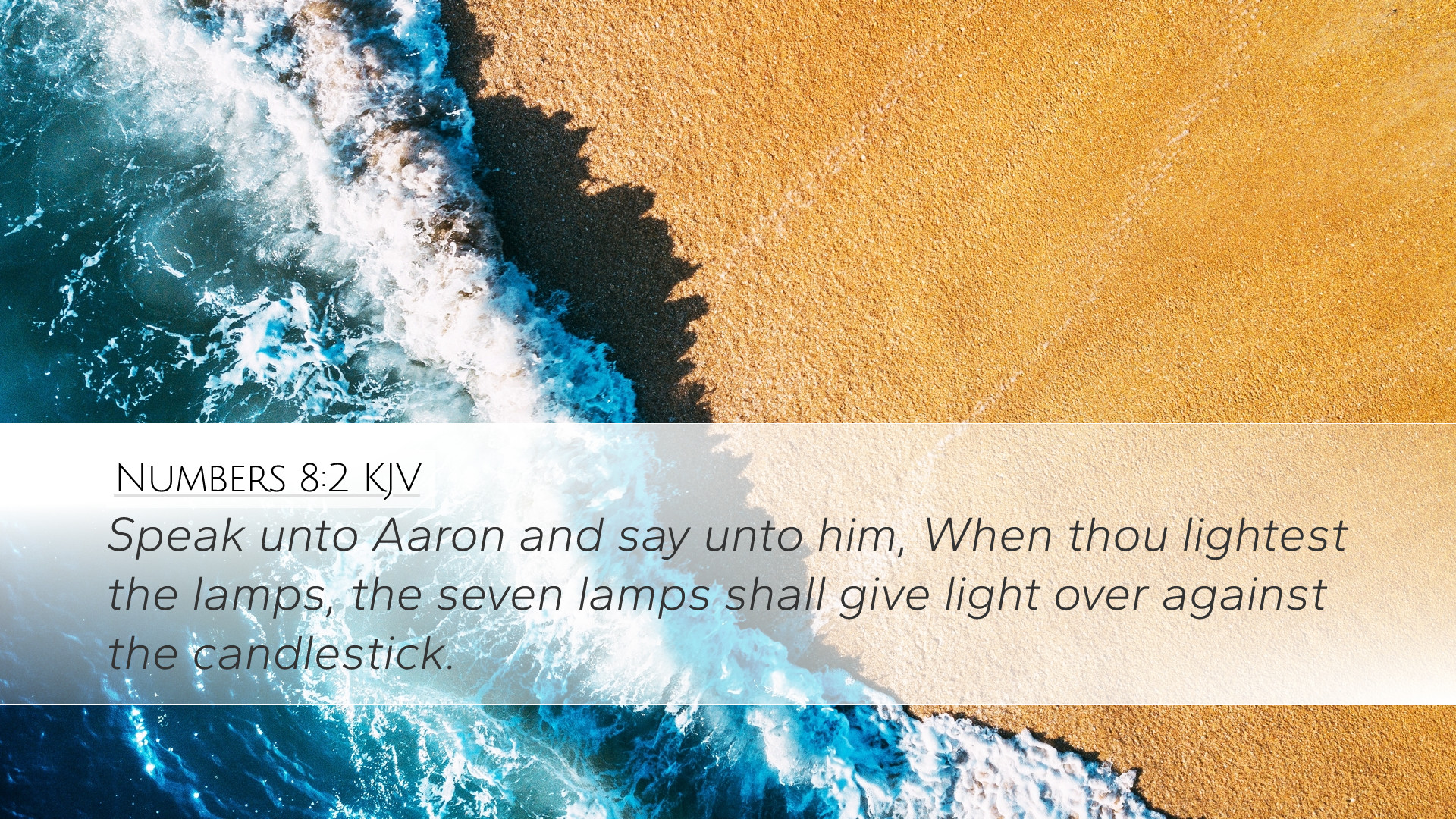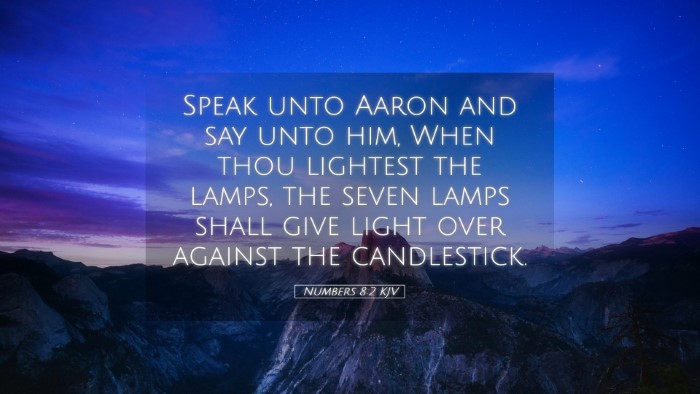Commentary on Numbers 8:2
Verse: "Speak unto Aaron, and say unto him, When thou lightest the lamps, the seven lamps shall give light over against the candlestick."
Introduction
This verse from the Book of Numbers outlines the instructions given to Aaron regarding the menorah, the seven-branched lampstand in the tabernacle. This commentary seeks to provide a comprehensive understanding of that verse by synthesizing insights from renowned public domain biblical commentaries.
Contextual Background
The Book of Numbers details the wanderings of the Israelites in the wilderness and contains various ceremonial laws. In chapter 8, the Lord gives specific commandments to Aaron concerning the lamps, displaying both the significance of the Levitical priesthood and God's desire for His people to maintain sacred practices.
The Significance of the Lamps
In ancient Israel, lamps held significant symbolism, representing not only physical light but also spiritual illumination:
- Matthew Henry: Henry notes that the lamps were to give light in the presence of God, signifying that the Lord is the source of wisdom and understanding for His people.
- Albert Barnes: Barnes points out that light in the tabernacle symbolizes God’s guidance and holiness. The lamps served as a reminder of the divine presence among the Israelites.
- Adam Clarke: Clarke emphasizes that the command for the lamps to shine before the candlestick illustrates the integral role of the priests in mediating the illumination of God's word to the people.
The Lighting of the Lamps
The act of lighting the lamps is not merely a physical act, but a ritual infused with meaning:
- Ritual Responsibility: The role of Aaron as the high priest underscores the importance of obedience and diligence in performing duties related to worship. The priest's actions in lighting the lamps signify a continual offering of worship to God.
- Symbol of Readiness: The expectation that the lamps should be lit signifies the readiness of God’s people to seek His guidance and presence. As Clarke articulates, this act reflects the continual need for the light of God in daily life.
- Spiritual Application: The lighting of lamps serves as a metaphor for believers today. It stresses the individual responsibility of Christians to keep their hearts illuminated by the word of God, as Barnes notes: "Let the light of Christ's love shine through us."
The Seven Lamps
The seven lamps themselves carry profound symbolism:
- Seven as Wholeness: The number seven in biblical texts often represents completeness and perfection. Matthew Henry observes that the seven lamps, therefore, convey the completeness of the divine illumination provided for the Israelite community.
- Representation of Tribes: The seven lamps can also symbolize the twelve tribes of Israel in their entirety, with a focus on the divine presence and guidance provided to the entire nation.
- Connection to Christ: The imagery of the lamps can be connected to Christ’s reference to Himself as the "light of the world" (John 8:12). Clarke asserts that just as the lamps illuminated the tabernacle, Christ illuminates the hearts of believers.
Concluding Thoughts
Numbers 8:2 exhorts believers to reckon with the Spirit’s illumination in their lives through the metaphor of the lamps in the tabernacle. The fundamental principles underlying the lighting of these lamps suggest a deeper engagement with worship, the necessity of divine guidance, and the communal aspect of God’s presence among His people.
Aaron's careful lighting of the lamps signifies to modern readers the essential task of every believer to foster a vibrant relationship with God, ensure spiritual readiness, and illuminate the world through the love and truth of Christ.
Reflection Questions for Further Study
- What does the symbolism of light mean in your personal walk with Christ?
- How can we as a community ensure that we are constantly reflecting God’s light in our lives?
- In what ways do the rituals of worship inform our relationship with God today?


